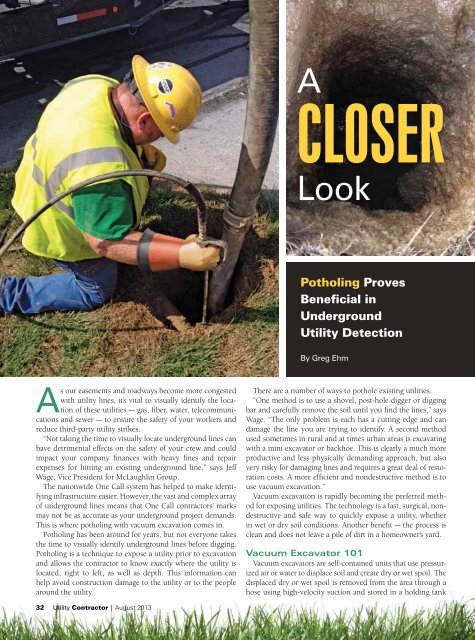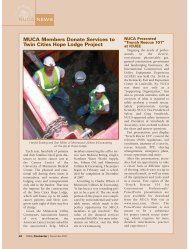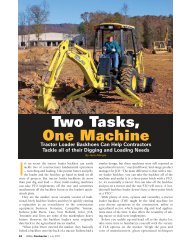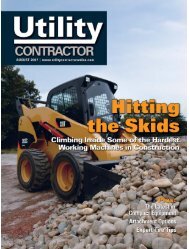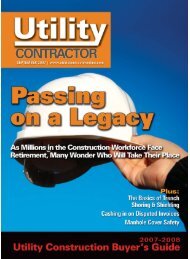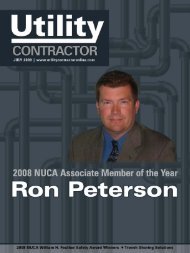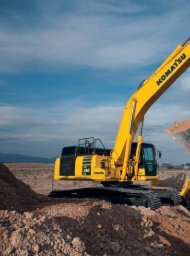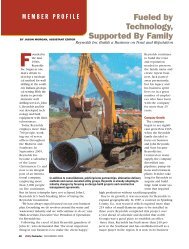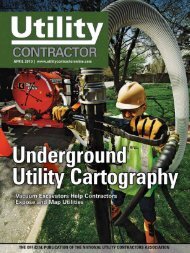download - Utility Contractor Online
download - Utility Contractor Online
download - Utility Contractor Online
- No tags were found...
You also want an ePaper? Increase the reach of your titles
YUMPU automatically turns print PDFs into web optimized ePapers that Google loves.
ACloserLookPotholing ProvesBeneficial inUnderground<strong>Utility</strong> DetectionBy Greg EhmAs our easements and roadways become more congestedwith utility lines, it’s vital to visually identify the locationof these utilities — gas, fiber, water, telecommunicationsand sewer — to ensure the safety of your workers andreduce third-party utility strikes.“Not taking the time to visually locate underground lines canhave detrimental effects on the safety of your crew and couldimpact your company finances with heavy fines and repairexpenses for hitting an existing underground line,” says JeffWage, Vice President for McLaughlin Group.The nationwide One Call system has helped to make identifyinginfrastructure easier. However, the vast and complex arrayof underground lines means that One Call contractors’ marksmay not be as accurate as your underground project demands.This is where potholing with vacuum excavation comes in.Potholing has been around for years, but not everyone takesthe time to visually identify underground lines before digging.Potholing is a technique to expose a utility prior to excavationand allows the contractor to know exactly where the utility islocated, right to left, as well as depth. This information canhelp avoid construction damage to the utility or to the peoplearound the utility.There are a number of ways to pothole existing utilities.“One method is to use a shovel, post-hole digger or diggingbar and carefully remove the soil until you find the lines,” saysWage. “The only problem is each has a cutting edge and candamage the line you are trying to identify. A second methodused sometimes in rural and at times urban areas is excavatingwith a mini excavator or backhoe. This is clearly a much moreproductive and less physically demanding approach, but alsovery risky for damaging lines and requires a great deal of restorationcosts. A more efficient and nondestructive method is touse vacuum excavation.”Vacuum excavation is rapidly becoming the preferred methodfor exposing utilities. The technology is a fast, surgical, nondestructiveand safe way to quickly expose a utility, whetherin wet or dry soil conditions. Another benefit — the process isclean and does not leave a pile of dirt in a homeowner’s yard.Vacuum Excavator 101Vacuum excavators are self-contained units that use pressurizedair or water to displace soil and create dry or wet spoil. Thedisplaced dry or wet spoil is removed from the area through ahose using high-velocity suction and stored in a holding tank32 <strong>Utility</strong> <strong>Contractor</strong> | August 2013


